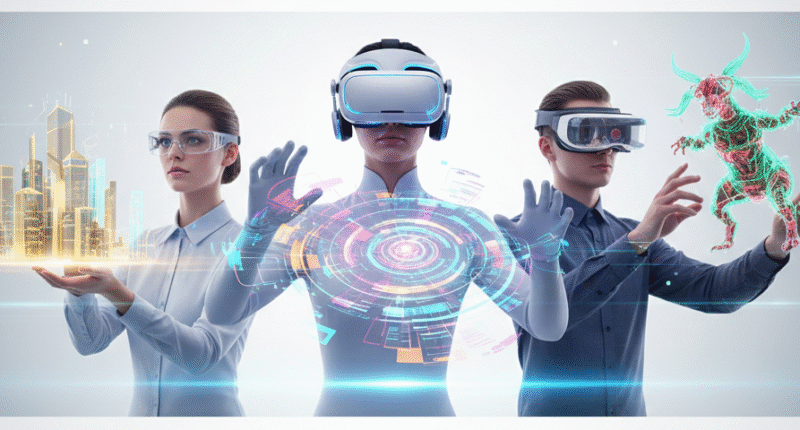The Quest for Immersive Tech in 2025
Introduction
The year 2025 marks a turning point in the evolution of immersive technology, with new virtual reality (VR) headsets and augmented reality (AR) glasses leading the charge toward experiential computing. Driven by innovations in hardware, artificial intelligence, and connectivity, brands like Meta, Apple, Samsung, and Google are redefining what’s possible in digital interaction. This article explores the standout devices, key trends, and the transformative impact of VR and AR on industries and everyday life.
The Rise of Next-Gen VR Headsets
Premium Performance and Comfort
In 2025, VR headsets are veering toward premium experiences and lightweight, ergonomic designs. The much-anticipated arrival of Project Moohan, a collaboration between Samsung and Google, will feature Google’s new Android XR spatial operating system. This headset boasts Qualcomm’s Snapdragon XR2+ Gen 2 chipset, offering up to 4.3K resolution per eye and major improvements in visual fidelity and user comfort. Technologies like color passthrough, eye and hand tracking, and foveated rendering are becoming standard, narrowing the gap between the virtual and physical worlds. Meanwhile, expected releases from companies like Valve and Meta continue to focus on broadening access without sacrificing performance for casual and professional users alike.mixed-news
Content and AI Integration
Today’s VR headsets do more than just gaming. AI-driven advances enable real-time speech recognition, environment adaptation, and personalized immersive content. Google’s Gemini assistant, integrated into upcoming devices, may further streamline user experiences. Consumers can expect more robust support for productivity apps, simulations, and collaborative virtual spaces—making headsets a tool for both entertainment and work.cacm.acm
AR Glasses: Blending Real and Virtual Worlds
Feature-Rich Smart Glasses
The AR sector is experiencing rapid innovation. Meta’s latest Ray-Ban Meta smart glasses and upcoming releases—like the Viture Beast AR specs with micro OLED screens—are pushing the boundaries of hands-free information, virtual screens, and AI-powered assistance. Features include wide-angle, high-resolution displays, intuitive hand and voice controls, and direct integration with platforms like Google Maps and social apps. Retail pricing for these high-tech glasses is now accessible, starting at $799, with new product launches intensifying competition in the wearables market.tomsguide
Expanding Use Cases
AR glasses are transforming industries:
-
Education and Training: Bringing interactive 3D content into classrooms and workplaces.
-
Retail: Allowing consumers to visualize products in their environments, with AR driving a 40% increase in retail engagement.
-
Healthcare: Supporting medical training and live surgeries with real-time data overlay, growing at 38% annually in adoption.peekpro
The Future: Extended Reality (XR) and Beyond
Convergence and Connectivity
Next-level immersive tech depends on high-speed 5G and AI-powered customization. XR—the blend of AR, VR, and MR (mixed reality)—is creating persistent, shared digital spaces. Advances in hardware are matched by software that adapts to users’ surroundings and preferences, enabling applications from metaverse learning environments to collaborative design sessions.ciklum
Challenges and Opportunities
While premium devices offer unparalleled experiences, cost and accessibility remain barriers. Yet, as AR/VR adoption accelerates across sectors, more affordable versions and innovative business models are expected to emerge, fueling the projected $520 billion AR/VR global market by 2031.ciklum
Conclusion
The quest for immersive tech dominance in 2025 is fueling a new generation of VR headsets and AR glasses that are powerful, comfortable, and versatile. With the lines between physical and digital realities blurring, the stage is set for immersive technologies not just to entertain, but to reshape how we learn, work, and connect.mixed-news+3










6 comments
Thank you.
Thanks.
🥰
Thanks
Thanks for sharing.
VR headset has been familiar and exciting experience in the past year. Expecting XR (expanded reality) be more challenging.😎😎